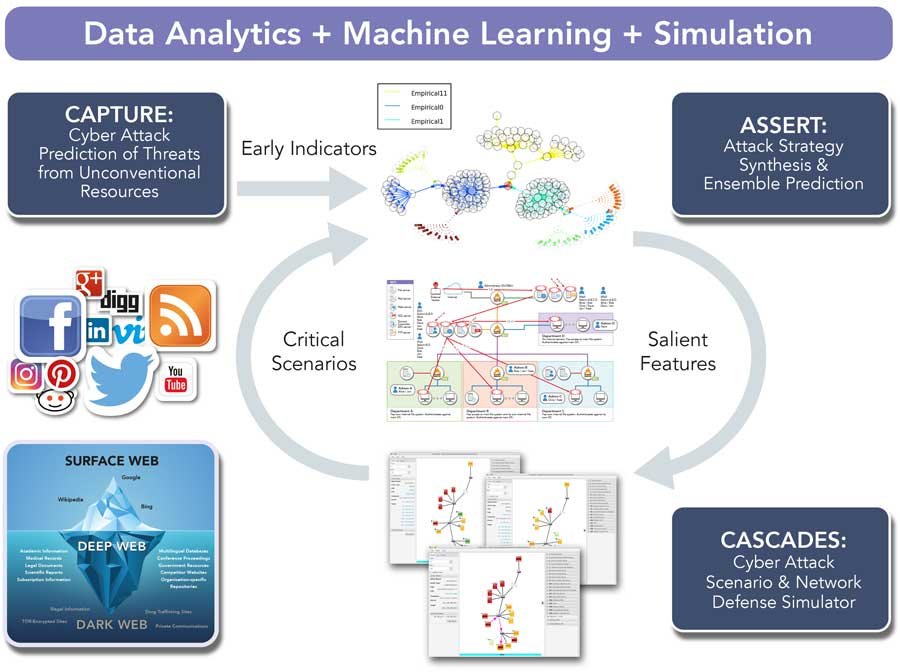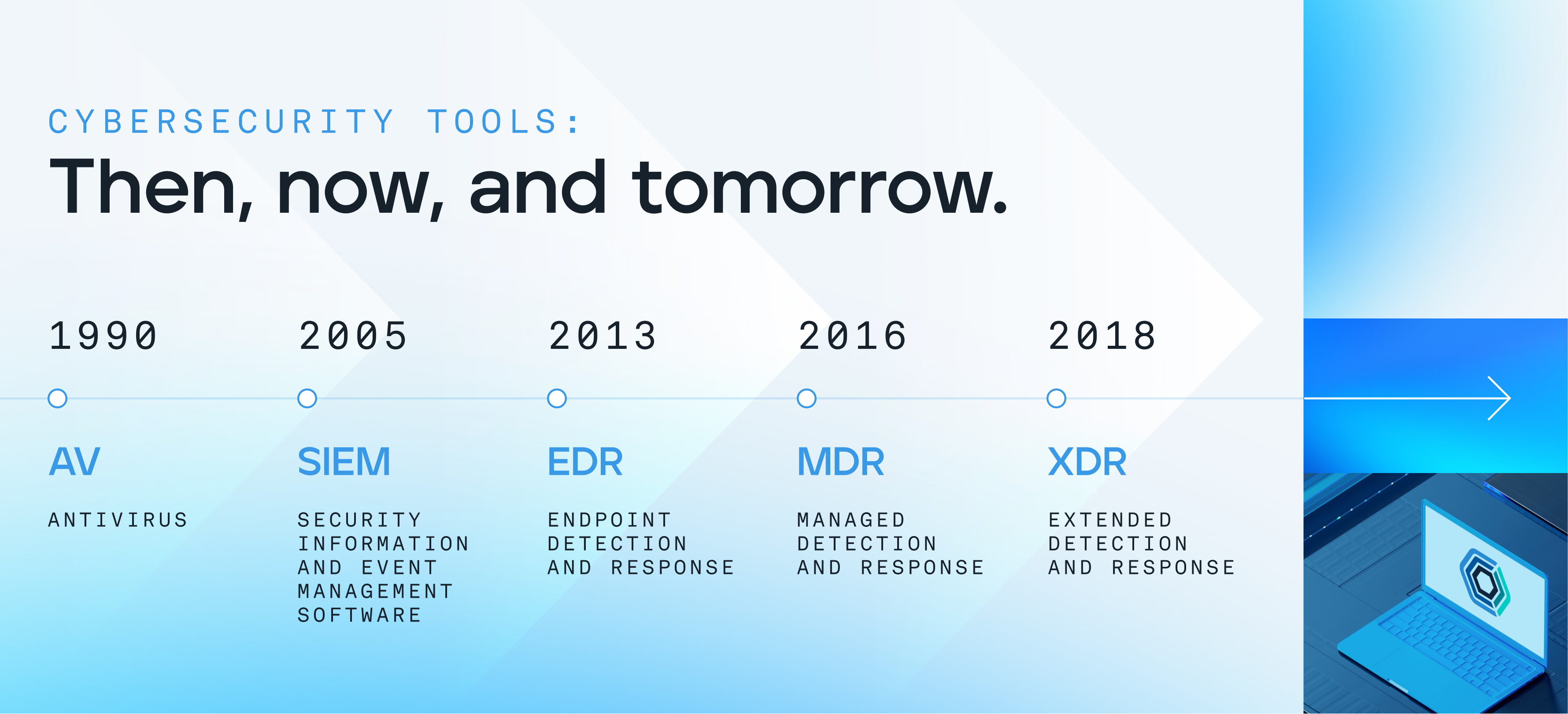
Introduction
Scope of Predicting Cyber Threats
In today’s digital landscape, the scope of predicting cyber threats continues to expand. Organizations are increasingly recognizing that foreseeing potential attacks is not simply optional; it’s vital for safeguarding sensitive information. This proactive approach involves analyzing patterns, potential vulnerabilities, and emerging technologies to stay one step ahead of cybercriminals.
- Vulnerability Assessment: Understanding weaknesses within IT infrastructure.
- Threat Intelligence Gathering: Observing and analyzing past attacks to identify trends.
- Emerging Technologies: Leveraging new tools like AI for threat prediction.
Significance of Cybersecurity Predictions
The significance of cybersecurity predictions cannot be overstated. By anticipating future threats, organizations can develop robust defense strategies and reduce potential risks.
For example, a company might employ predictive models that indicate a surge in ransomware activity during specific months. This foresight allows them to:
- Increase security training for employees.
- Implement software updates to eliminate vulnerabilities.
- Enhance monitoring of networks.
Ultimately, preparing for potential cyber threats ensures a resilient and secure operational environment, making cybersecurity predictions an essential component of modern business strategy.
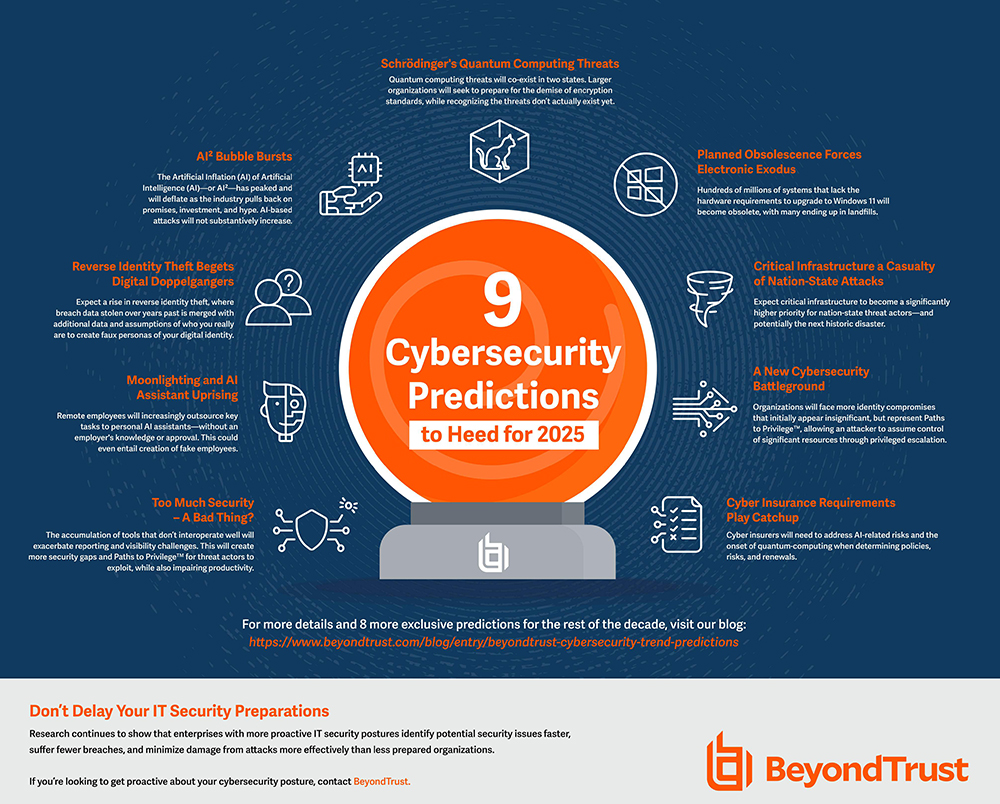
Historical Trends in Cyber Threats
Past Developments in Cyber Attacks
Delving into the historical trends of cyber threats gives us valuable insight into how they have evolved over time. The early days of hacking often involved mischievous individuals exploring vulnerabilities. However, as technology advanced, so did the sophistication of cyber attacks.
- Viruses and Worms: The ’80s and ’90s introduced malware like the Melissa and ILOVEYOU viruses, leading to widespread chaos.
- Denial-of-Service (DoS) Attacks: By the early 2000s, these attacks became a popular method for disrupting services, highlighting the need for robust network protection.
- Ransomware: The rise of ransomware in recent years has shown how financially motivated attacks can cripple businesses overnight.
Lessons Learned from Previous Threats
Reflecting on these past developments, several critical lessons emerge:
- Importance of Cyber Hygiene: Regular software updates and user training can drastically minimize vulnerabilities.
- Incident Response Plans: Organizations must prepare comprehensive strategies for immediate response.
- Continuous Monitoring: Ongoing surveillance can uncover suspicious activities before they escalate.
These lessons prove that while threats will continue to evolve, learning from the past equips businesses to navigate future cyber challenges more effectively.

Current Landscape of Cyber Threats
Types of Common Cyber Attacks
As we analyze the current landscape of cyber threats, it’s evident that attackers have become increasingly creative and sophisticated. The types of cyber attacks are constantly evolving, posing unique challenges for organizations. Some common types include:
- Phishing: Deceptive emails trick users into revealing sensitive information.
- Malware: Software designed to disrupt, damage, or gain unauthorized access to systems.
- Ransomware: Malicious software that encrypts data, demanding payment for its release.
- Distributed Denial of Service (DDoS): Overloading a system to render it inoperable temporarily.
These attacks not only target large corporations but also small and medium-sized businesses, often leaving them vulnerable due to limited cybersecurity resources.
Impact of Cyber Threats on Businesses
The impact of cyber threats on businesses is profound and multifaceted.
For example, a data breach can result in:
- Financial Loss: Recovery costs can soar, often reaching hundreds of thousands of dollars.
- Reputation Damage: Losing customer trust can take years to rebuild.
- Legal Ramifications: Companies may face lawsuits if they fail to protect user data effectively.
In short, understanding the current cyber threat landscape is crucial for organizations striving to safeguard their assets and maintain their reputation in this digital age.
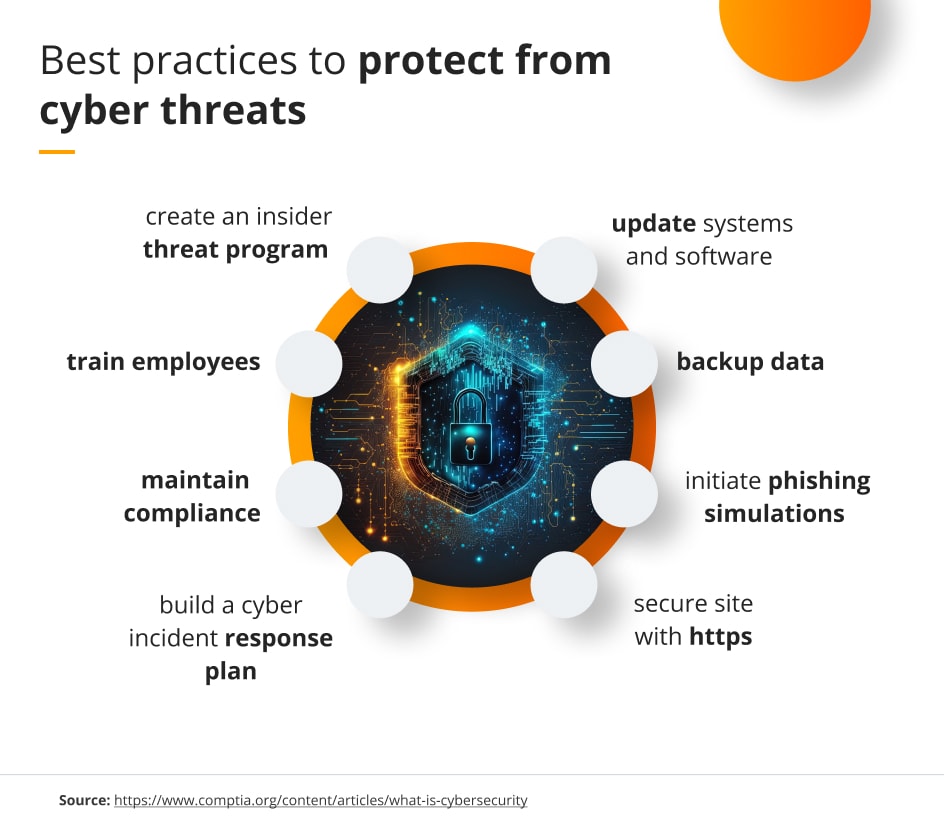
Factors Influencing Future Cyber Threats
Technological Advancements
As we continue to navigate through an ever-changing digital landscape, technological advancements play a pivotal role in shaping the future of cyber threats. Innovations such as artificial intelligence (AI) and the Internet of Things (IoT) are both providing new tools for defenders and new opportunities for cybercriminals.
- AI-Driven Attacks: Cybercriminals can leverage AI to automate attacks that adapt in real-time to defenses.
- IoT Vulnerabilities: With more connected devices, the potential entry points for attackers multiply, creating unforeseen risks.
- Blockchain Technology: While it offers enhanced security, it can also be misused for hiding transactions in cyber-criminal activities.
Socio-Political Trends
On another front, socio-political trends are influencing the landscape of cyber threats significantly.
For instance:
- Geopolitical Tensions: State-sponsored cyber attacks are on the rise, targeting rival nations or political groups.
- Social Movements: Hacktivism can lead to cyber threats against organizations that are perceived to oppose certain causes.
- Regulatory Changes: Evolving data protection laws often compel businesses to adapt quickly, sometimes leaving gaps in their cybersecurity.
By understanding these factors, organizations can better anticipate and prepare for the diverse array of cyber threats that loom on the horizon.
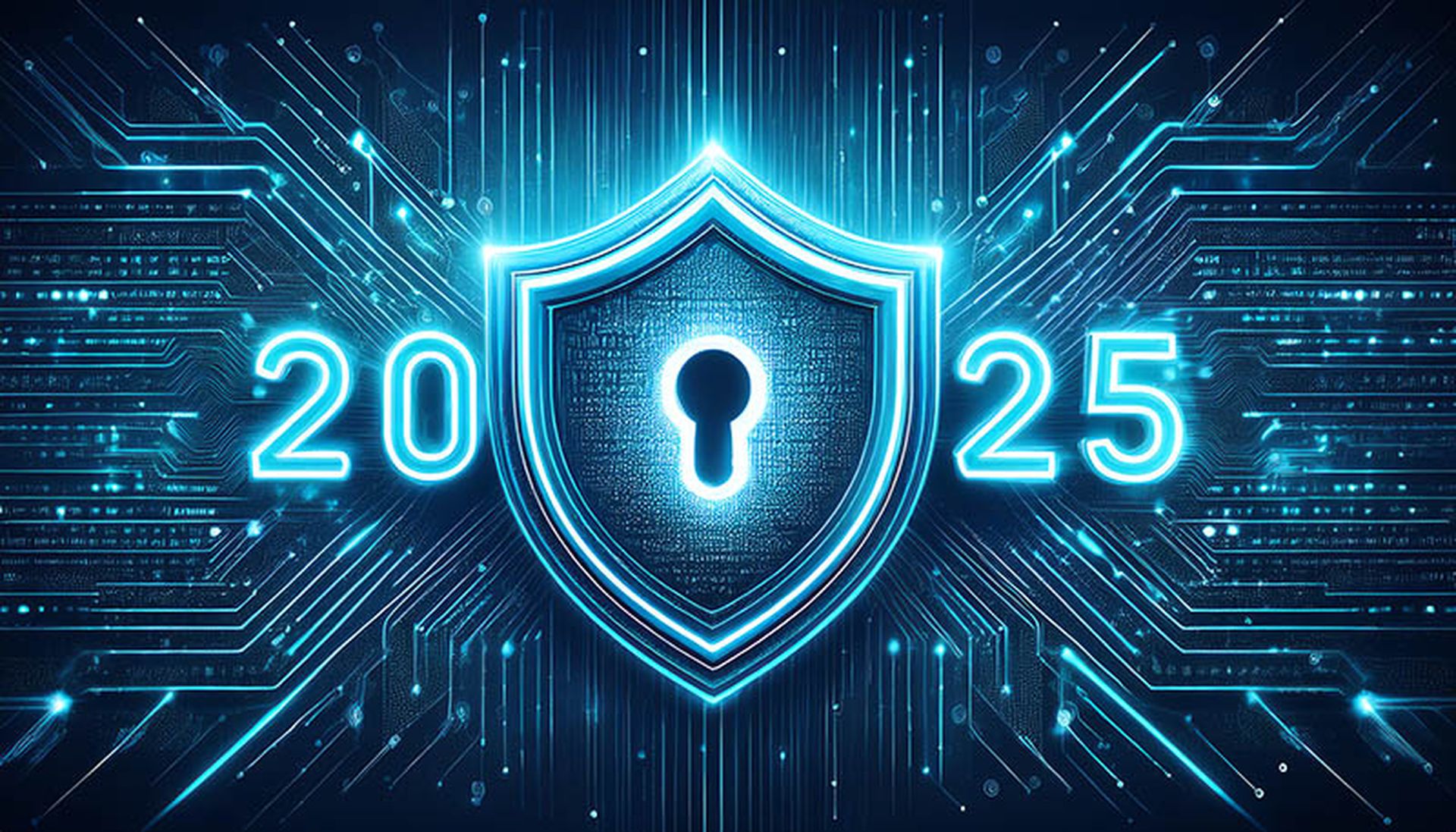
Predictive Techniques in Cybersecurity
Machine Learning Algorithms
As organizations seek to defend against evolving cyber threats, predictive techniques have gained prominence, with machine learning algorithms leading the charge. These algorithms can analyze vast amounts of data and identify patterns that may indicate malicious activity. Here’s how they work:
- Anomaly Detection: By establishing a baseline of normal behavior, machine learning can identify deviations that may suggest a breach—like unusual login times or large data downloads.
- Threat Intelligence: Algorithms can sift through countless threat reports to detect emerging threats relevant to a specific industry.
- Continuous Learning: As new data becomes available, these systems evolve, enhancing their ability to predict and mitigate future threats.
Behavioral Analytics
Another revolutionary technique is behavioral analytics, which focuses on understanding user behaviors to spot potential threats.
For example:
- User Activity Monitoring: Tracking how employees interact with systems can highlight abnormal actions, such as accessing sensitive files not part of their usual role.
- Risk Scoring: Assigning scores based on behavioral patterns helps prioritize which users or activities warrant further investigation.
Incorporating these predictive techniques allows organizations to stay ahead of cybercriminals, ensuring a more robust defense strategy in an unpredictable landscape.

Expert Forecasts on Future Cyber Threats
Insights from Industry Leaders
As we look ahead, expert forecasts on future cyber threats provide invaluable insights into the evolving landscape. Industry leaders emphasize that the pace of technological change will continue to create new vulnerabilities. For instance, cybersecurity professionals predict that increased remote working will cultivate new attack vectors, as employees connect from less secure environments.
- Cloud Security Concerns: With more data being stored in the cloud, leaders stress the necessity for robust cloud security measures.
- Supply Chain Attacks: Experts highlight the rise in attacks targeting software suppliers, revealing how interconnected systems can pose unforeseen risks.
Predictions for Emerging Threat Vectors
As for emerging threat vectors, several crucial trends are on the horizon:
- Ransomware-as-a-Service: This model will likely proliferate, allowing even less skilled attackers access to sophisticated ransomware tools.
- IoT Exploitations: As smart devices continue to infiltrate homes and businesses, the chance of exploitation rises.
By heeding these insights and predictions, organizations can strengthen their defenses against the complexities of future cyber threats, fostering a proactive rather than reactive approach to cybersecurity.

Mitigation Strategies for Future Cyber Threats
Proactive Security Measures
To effectively guard against the evolving landscape of cyber threats, implementing proactive security measures is essential. Rather than waiting for an attack, organizations are encouraged to anticipate and prevent vulnerabilities. Here’s how:
- Regular Security Audits: Conducting routine assessments to identify weaknesses in the system ensures that potential threats are addressed before they can be exploited.
- Employee Training: Equipping staff with knowledge about phishing scams and other vulnerabilities fosters a culture of cybersecurity awareness.
- Advanced Threat Detection Solutions: Utilizing AI-driven tools can help automate the detection of unusual activities, enabling quicker responses.
Incident Response Planning
Along with proactive measures, a solid incident response plan is crucial when threats inevitably arise.
For instance:
- Defined Roles: Establishing clear responsibilities within the response team streamlines communication and action during a crisis.
- Regular Drills: Conducting simulated attacks helps prepare employees for real-world scenarios, enhancing their confidence in managing threats.
- Post-Incident Analysis: After an incident, conducting a thorough review helps organizations learn from mistakes and improve their response strategies.
By embracing these mitigation strategies, organizations can not only reduce the risk of cyber attacks but also respond effectively when incidents occur, ultimately reinforcing their cybersecurity posture.

Collaboration in Cyber Threat Intelligence
Information Sharing Among Organizations
In today’s interconnected world, collaboration in cyber threat intelligence is vital for building robust defenses. Information sharing among organizations can dramatically enhance their ability to identify and combat cyber threats. When businesses openly exchange data on threats and vulnerabilities, they create a collective knowledge base that strengthens overall security.
- Threat Intelligence Platforms: Utilizing platforms that aggregate threat data enables organizations to stay informed about emerging threats relevant to their industry.
- Working Groups: Establishing sector-specific collaborations allows companies to discuss challenges and share best practices in real-time.
- Anonymous Sharing: Many platforms encourage anonymous reporting of incidents, allowing even the smallest companies to contribute valuable information without fear.
Role of Public-Private Partnerships
Public-private partnerships also play a crucial role in bolstering cybersecurity efforts.
For example:
- Government Collaborations: Agencies like the Cybersecurity and Infrastructure Security Agency (CISA) work with businesses to disseminate timely threat information and best practices.
- Joint Cyber Exercises: By participating in simulation exercises, both sectors can enhance their readiness to respond to real-world cyber incidents.
Through these collaborations and partnerships, organizations can foster a proactive cybersecurity landscape that not only defends against threats but also cultivates resilience in the face of ever-evolving challenges.
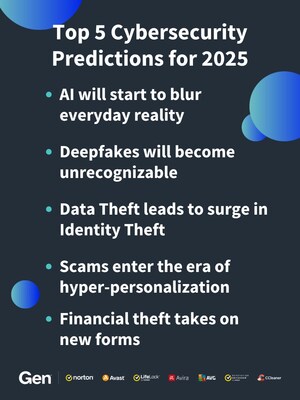
Ethical Implications of Cybersecurity Predictions
Privacy Concerns in Threat Monitoring
As organizations invest in predictive techniques to enhance cyber defense, ethical implications arise—especially regarding privacy concerns in threat monitoring. While threat detection often requires surveillance of user behavior, this can inadvertently infringe on individual privacy rights.
- Data Collection Practices: Collecting extensive user data to identify potential threats can raise red flags about how much information is too much.
- Anonymity vs. Security: Balancing the need for data with the right to anonymity is a challenge organizations must face, as intrusive monitoring can lead to distrust among users.
Balancing Security and Civil Liberties
Moreover, the overarching challenge lies in balancing security with civil liberties. As organizations implement more robust security measures, they must also ensure they do not overreach.
For example:
- Transparent Policies: Establishing clear, transparent data collection policies can help users understand how their information is utilized.
- Accountability Mechanisms: Creating systems to review and audit security practices ensures that privacy rights are respected while maintaining security.
By thoughtfully addressing these ethical considerations, businesses can foster trust and ensure that security measures do not come at the expense of individual liberties, ultimately supporting a more balanced approach to cybersecurity.
Conclusion
Recap of Expert Forecasts
As we’ve explored throughout this discussion, expert forecasts highlight a complex and evolving landscape of cyber threats. Industry leaders anticipate the proliferation of ransomware-as-a-service, the increase in IoT vulnerabilities, and the greater focus on supply chain attacks. Understanding these insights can significantly shape how organizations prepare their defenses.
- Emerging Attack Vectors: From sophisticated malware to potential breaches in the cloud, vigilance is essential.
- Collaborative Intelligence: Sharing threat intelligence across sectors enhances preparedness and response capabilities.
Importance of Preparedness in Cybersecurity
Ultimately, the key takeaway is that preparedness in cybersecurity is not just beneficial; it’s imperative. Organizations that adopt proactive security measures, develop incident response plans, and engage in information sharing are better positioned to defend against future threats.
By fostering a culture of continuous learning and adaptation, businesses can turn vulnerability into strength, navigating the challenges of the digital age with confidence. So let’s embrace these strategies today to secure a safer tomorrow.
